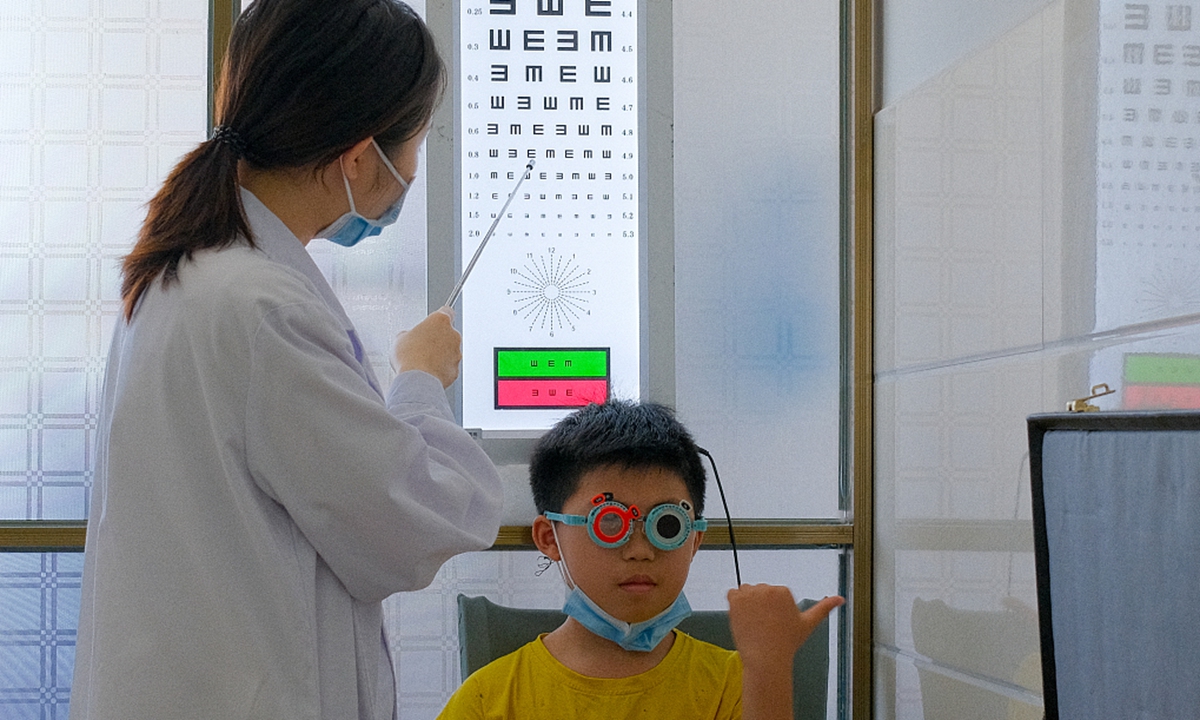
An ophthalmologist checks the eyesight of a child in Yongzhou, Central China's Hunan Province on June 6, 2021, the 26th Chinese National Eye Care Day. Photo: CFP
The overall myopia rate among Chinese children and adolescents amounted to 51.9 percent in 2022, with the proportion of high myopia declining, according to statistics released by China’s National Disease Control and Prevention Administration on Wednesday.
Statistics show that myopia rate among primary school students was 36.7 percent, while the myopia rates for junior high school and senior high school students amounted to 71.4 percent and 81.2 percent, respectively in 2022. The overall myopia rate among Chinese children and adolescents dropped by 0.7 percentage points from 52.6 percent in 2021 and dropped by 1.7 percentage points from the 53.6 percent of the results of the national myopia survey conducted in 2018.
Among the students with myopia, 53.3 percent were identified as mild shortsightedness, 37 percent as medium myopia and 9.7 percent as high myopia. There is a declining proportion of high myopia cases among the students, which showed that China has achieved positive results in the prevention and control of myopia.
According to the administration, the monitoring of myopia and its influencing factors has so far covered all districts and counties across China, and disease control departments at all levels continue in carrying out myopia monitoring on children and adolescents in all localities.
Next step, the administration will continue to promote the prevention and control of myopia, and to strengthen the monitoring and evaluation of myopia and its influencing factors in children and adolescents, as well as strengthen the popularization of the professional training.
During this year’s two sessions, China's Minister of Education Huai Jinpeng said that China will build an education system with comprehensive quality cultivation of morality, intelligence, physical fitness, aesthetic education and labor, assuring the students an hour of physical exercises and sufficient recess activities every day, endeavoring to solve the myopia, obesity and psychological problems among students.
A joint notice recently released by the Ministry of Education, the National Health Commission and the State Administration for Market Regulation made it clear that primary and middle schools should arrange students to go out of the classroom for appropriate activities and relaxation during each class break.
The authorities have ordered regular eye exercises and eyesight tests for primary and middle school students in order to track, compare and analyze students’ eyesight every year.
The authorities also urged schools to assure students recess activities during class breaks. At least 30 minutes’ outdoor activities for students should be arranged to relieve their visual fatigue.
Besides, the authorities urged to further carry out publicity education on myopia prevention and achieve early prevention, early detection, early intervention and early correction of myopia.
Global Times




